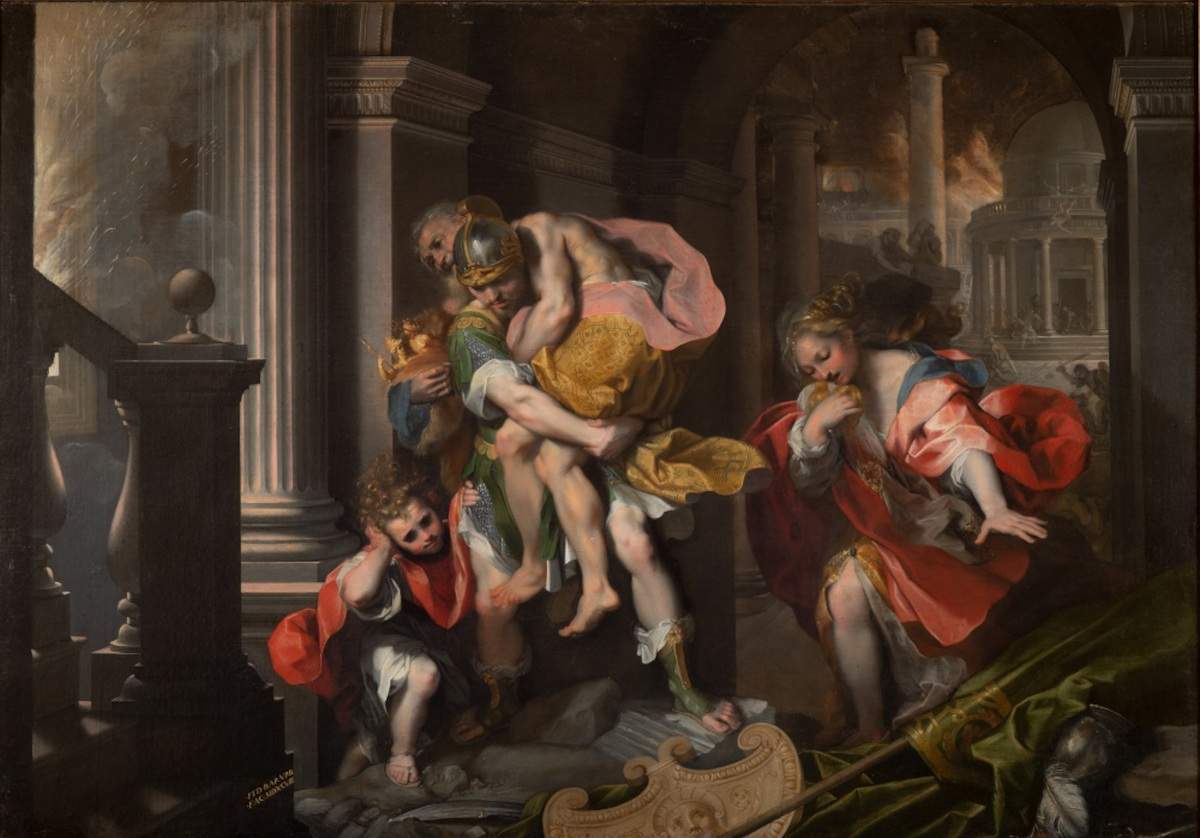A major monograph dedicated to Federico Barocci in Urbino, with national and international loans
From June 20 to October 6, 2024, the Palazzo Ducale in Urbino, home of the Galleria Nazionale delle Marche, will host the major monographic exhibition Federico Barocci Urbino. The Excitement of Modern Painting, curated by Luigi Gallo and Anna Maria Ambrosini Massari, with Luca Baroni and Giovanni Russo.
Painter, extraordinary draftsman and innovative engraver, Federico Barocci (Urbino, 1528/1535 - 1612) marked the Italian and European art scene for nearly a century. Despite his choice, unusual at the time, to remain in his hometown, far from the great cultural and patronage centers, he managed to establish himself with tenacious effort as the most admired, sought-after and paid author of sacred paintings of the second half of the 16th century.
On the occasion of the exhibition, loans from important national and international museums will arrive in Urbino, enriching the already remarkable collection of the Galleria Nazionale delle Marche. Among paintings and drawings, 76 works by Federico Barocci will be on display, with the intention of illustrating all phases of his production. His artistic career will be presented following a thematic ordering, aimed at deepening the peculiarities of his production in the context of the great art of the 16th and 17th centuries.
The exhibition will be divided into six narrative nuclei. In the first room, the cultural context in which the artist was formed and worked will be analyzed, presenting theyouthful Self -portrait and thesenile Self-portrait (Florence, Palatina Gallery), the portraits of the most representative personages of the court and of his main patron to whom he was bound by a friendly relationship, Duke Francesco Maria II Della Rovere (Florence, Palatina Gallery). Here the masterpieces of Baroque portraiture will be presented along with the Madonna of the Cat (Florence, Uffizi).
The second room will deal with the theme of large altarpieces made with innovative nocturnal effects that revolutionized the 16th-century tradition with the unprecedented chromatic flashes accompanying some masterpieces, such as the Deposition executed for the Cathedral of San Lorenzo in Perugia, the Madonna of San Simone in the Galleria Nazionale delle Marche or the Visitation at the Chiesa Nuova and theInstitution of the Eucharist at the Minerva.
The third room will be devoted to the theme of affections, nature and emotions with small paintings intended for private devotion. Paintings such as Christ Appears to Mary Magdalene (Florence, Uffizi), Madonna of the Cherries (Pinacoteca Vaticana), Cat’s Holy Family (National Gallery, London), Madonna of St. John (Galleria Nazionale delle Marche), Nativity (Prado Museum, Madrid), and again the magnificent St. Jerome Penitent and St. Francis, from the Galleria Borghese and the Metropolitan in New York, respectively, will be presented here.
Barocci’s graphics, on the other hand, will be the focus of the fourth room, with a selection of drawings, cartoons, and engravings from major national and international collections.
In the fifth room it will be possible to admire the compositions from their preparatory phase to the finished work; among the works featured will be theAnnunciation conserved in the Vatican, displayed next to several sheets elaborated for its realization, the Escape of Aeneas from Troy (Rome, Galleria Borghese), flanked by the preparatory cartoon conserved in the Louvre, and finally the Deposition of Senigallia, which returned to Urbino from 1608, with its preparatory sketch conserved in the museum next to it.
Finally, in the sixth and last room, the painter’s last works dating back to the first decade of the 17th century will be presented, in which color becomes chromatic emotion anticipating some of the solutions that distinguish Baroque art: these include Beata Michelina (Pinacoteca Vaticana), Madonna del Rosario (Senigallia),Assunzione della Vergine (Galleria Nazionale delle Marche), and Presentazione della Vergine al Tempio (Rome, Chiesa Nuova).
Barocci’s art will then continue in theRovere apartment on the second floor, where the Ducal Palace boasts the largest number of his sacred works: theImmaculate Conception, the Crucifixion with the Sorrowful, St. Francis Receives the Stigmata, the derivation from the Pardon of Assisi, and the two works on loan from the Pinacoteca di Brera to the Galleria Nazionale delle Marche, namely the Madonna and Child in Glory with Saints John the Baptist and Francis and theEcce Homo finished by his pupil Ventura Mazza.
“For the first time in Urbino,” said Luigi Gallo, “an extensive monographic exhibition will illustrate the work of one of the greatest Italian painters, Federico Barocci. The artist’s unusual choice to remain in his hometown, despite having known the major centers of Italian art, and in particular Rome, did not prevent him from becoming very famous and obtaining important commissions from all over Italy and beyond. Divided into thematic sections, the exhibition will feature exceptional masterpieces from museums around the world and will be enhanced by an extensive focus on the artist’s drawings that will demonstrate the long and careful study that preceded the creation of each of his works.”
Image: Federico Barocci, Escape of Aeneas from Troy (1598; oil on canvas, 179 x 253 cm; Rome, Galleria Borghese)
 |
| A major monograph dedicated to Federico Barocci in Urbino, with national and international loans |
Warning: the translation into English of the original Italian article was created using automatic tools. We undertake to review all articles, but we do not guarantee the total absence of inaccuracies in the translation due to the program. You can find the original by clicking on the ITA button. If you find any mistake,please contact us.




























